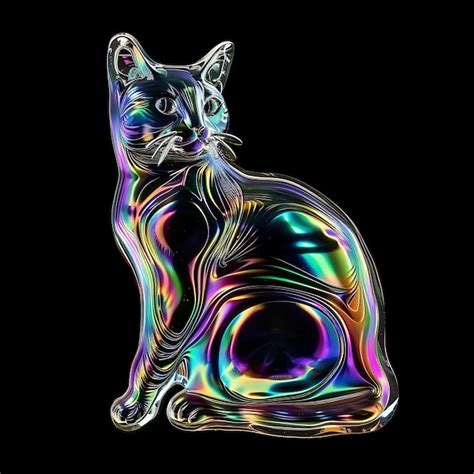An Iridescent Odyssey into a World of Captivating Colors
The mesmerizing allure of oil slicks has long captivated our imaginations, inspiring countless artistic and scientific endeavors. Their iridescent hues, a symphony of colors that dance and shift with the light, have become a symbol of beauty and intrigue.

1. The Science Behind the Rainbow Dance
Oil slicks are created when crude oil or other petroleum products spill into water. As the oil spreads and thins, it forms a layer just a few molecules thick on the water’s surface. This thin film acts like a prism, refracting and reflecting light waves in unique ways.
Depending on the oil’s thickness and the angle of the sun’s rays, different wavelengths of light are amplified or suppressed, resulting in the vibrant colors we observe.
22. The Multifaceted Palette of Oil Slicks
The colors of oil slicks can vary dramatically depending on the type of oil, the thickness of the film, and the lighting conditions. Here are some of the most common shades encountered:
- Gold and Yellow: These colors are typically seen in thinner oil films, where the light waves are less distorted.
- Green and Blue: These colors emerge from thicker oil films, where the light waves undergo more refraction and reflection.
- Purple and Pink: These hues are less common but can occur in very thin oil films or under certain lighting conditions.
3. Harnessing the Iridescent Power
The unique optical properties of oil slicks have sparked a wide range of applications, including:
Art and Design: Oil slick colors have been used to create shimmering paintings, sculptures, and textiles.
Optoelectronics: Researchers are exploring the use of oil slicks to develop tunable optical devices such as filters and sensors.
Solar Energy: Oil slicks could potentially be used as a low-cost and efficient way to enhance the performance of solar panels.
4. 7 Common Mistakes to Avoid When Working with Oil Slick Colors
- Ignoring the Thickness of the Film: The thickness of the oil film plays a crucial role in determining the colors produced.
- Assuming Equal Response to All Colors: Different wavelengths of light interact with oil slicks in unique ways, resulting in varying degrees of color intensity.
- Overlooking the Lighting Conditions: The angle and intensity of sunlight can significantly affect the colors observed.
- Neglecting the Impact of Contaminants: Impurities in the oil or water can alter the color and consistency of the oil slick.
- Using Unsuitable Materials: Some materials may react with or absorb oil slicks, leading to color changes or degradation.
- Ignoring Safety Precautions: Handling oil slicks requires proper safety protocols to prevent exposure to toxic fumes or spills.
- Underestimating the Beauty and Value: Oil slick colors possess an intrinsic beauty and potential for innovation that should be appreciated and explored.
5. Splashing into the Future: Innovative Applications
The iridescent nature of oil slicks has inspired a plethora of new applications, including:
- Oil Spill Detection: Oil slicks can be detected and monitored using remote sensing techniques that measure their optical properties.
- Camouflage: The dynamic colors of oil slicks could be used to create innovative camouflage materials for military and wildlife protection purposes.
- Holography: Researchers are investigating the use of oil slicks to create holographic displays with unique optical effects.
- Color-Changing Inks: Novel inks that mimic the color-shifting properties of oil slicks could lead to advanced printing and anti-counterfeiting technologies.
6. Questions to Engage Customers’ Perspectives
- What are the most striking applications of oil slick colors you have encountered?
- How could the unique optical properties of oil slicks be harnessed for practical solutions or artistic expressions?
- What common misconceptions or challenges should be addressed to promote the wider use of oil slick colors?
7. Digging Deep into Customer Needs and Wants
- Survey Question: Which oil slick colors resonate most with you, and why?
- Interview Question: What specific applications or products would you be interested in that incorporate oil slick colors?
- Focus Group Question: What are the key attributes of oil slick colors that would enhance your experience with them?
8. Tables for Easy Reference
Table 1: Oil Slick Colors and Associated Wavelengths
| Color | Wavelength Range (nm) |
|---|---|
| Gold | 550-600 |
| Yellow | 580-620 |
| Green | 500-550 |
| Blue | 450-500 |
| Purple | 420-450 |
| Pink | 630-650 |
Table 2: Applications of Oil Slick Colors
| Industry | Application |
|---|---|
| Art and Design | Paintings, sculptures, textiles |
| Optoelectronics | Tunable optical filters, sensors |
| Solar Energy | Enhanced solar panel efficiency |
| Camouflage | Military and wildlife protection |
| Holography | Holographic displays |
| Color-Changing Inks | Advanced printing, anti-counterfeiting |
Table 3: Common Mistakes to Avoid When Working with Oil Slick Colors
| Mistake | Impact |
|---|---|
| Ignoring Film Thickness | Affects color intensity and hues |
| Assuming Equal Response | Different wavelengths produce varying color effects |
| Overlooking Lighting Conditions | Changes the appearance of oil slick colors |
| Neglecting Contaminants | Impurities alter color and consistency |
| Using Unsuitable Materials | Can react with or absorb oil slicks |
| Ignoring Safety Precautions | Exposes to toxic fumes or spills |
| Underestimating Beauty and Value | Limits innovation and appreciation |
Table 4: Customer Engagement Questions
| Question Type | Purpose |
|---|---|
| Survey Question | Quantify customer preferences |
| Interview Question | Uncover specific application interests |
| Focus Group Question | Explore key attributes for enhanced experiences |
